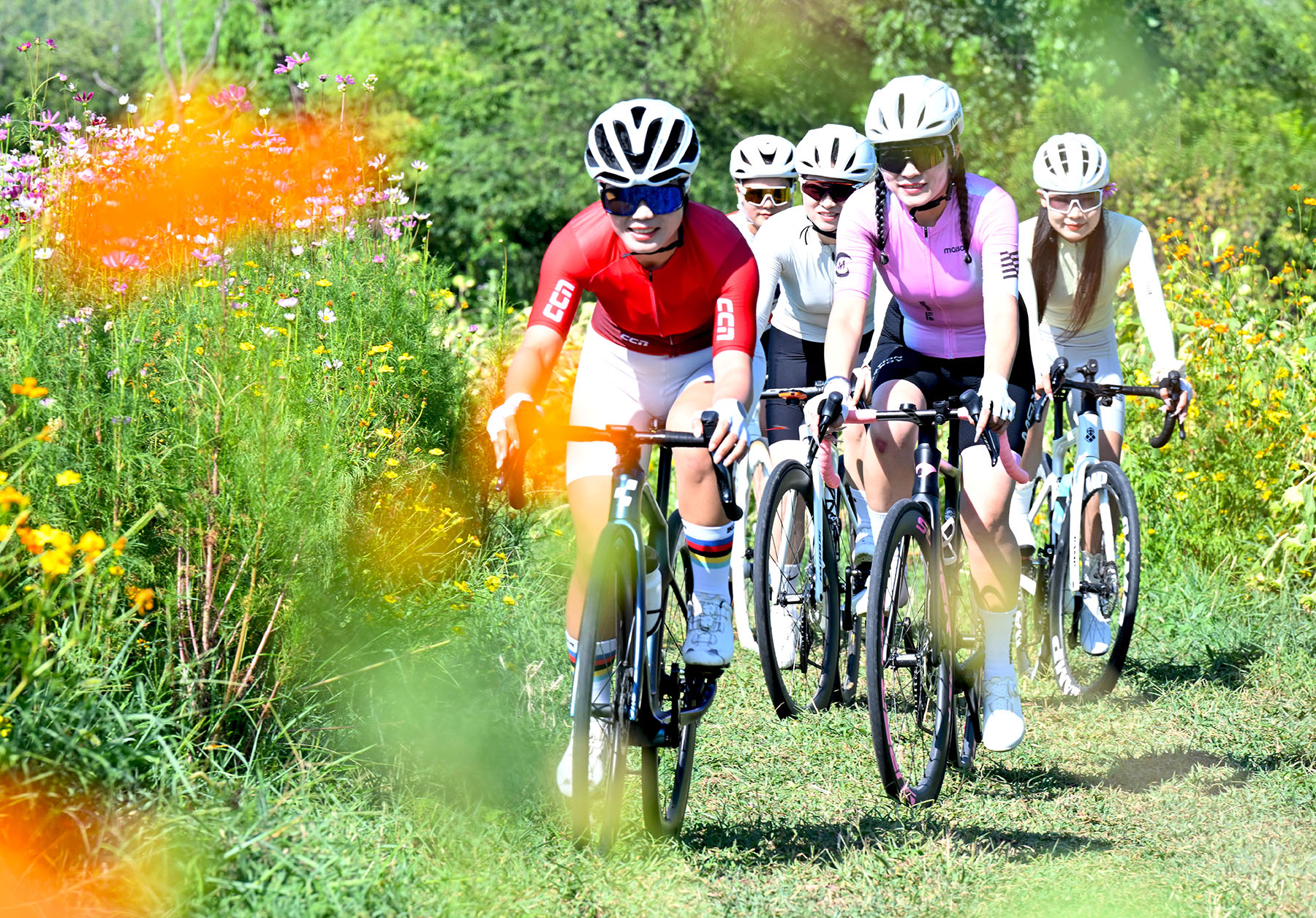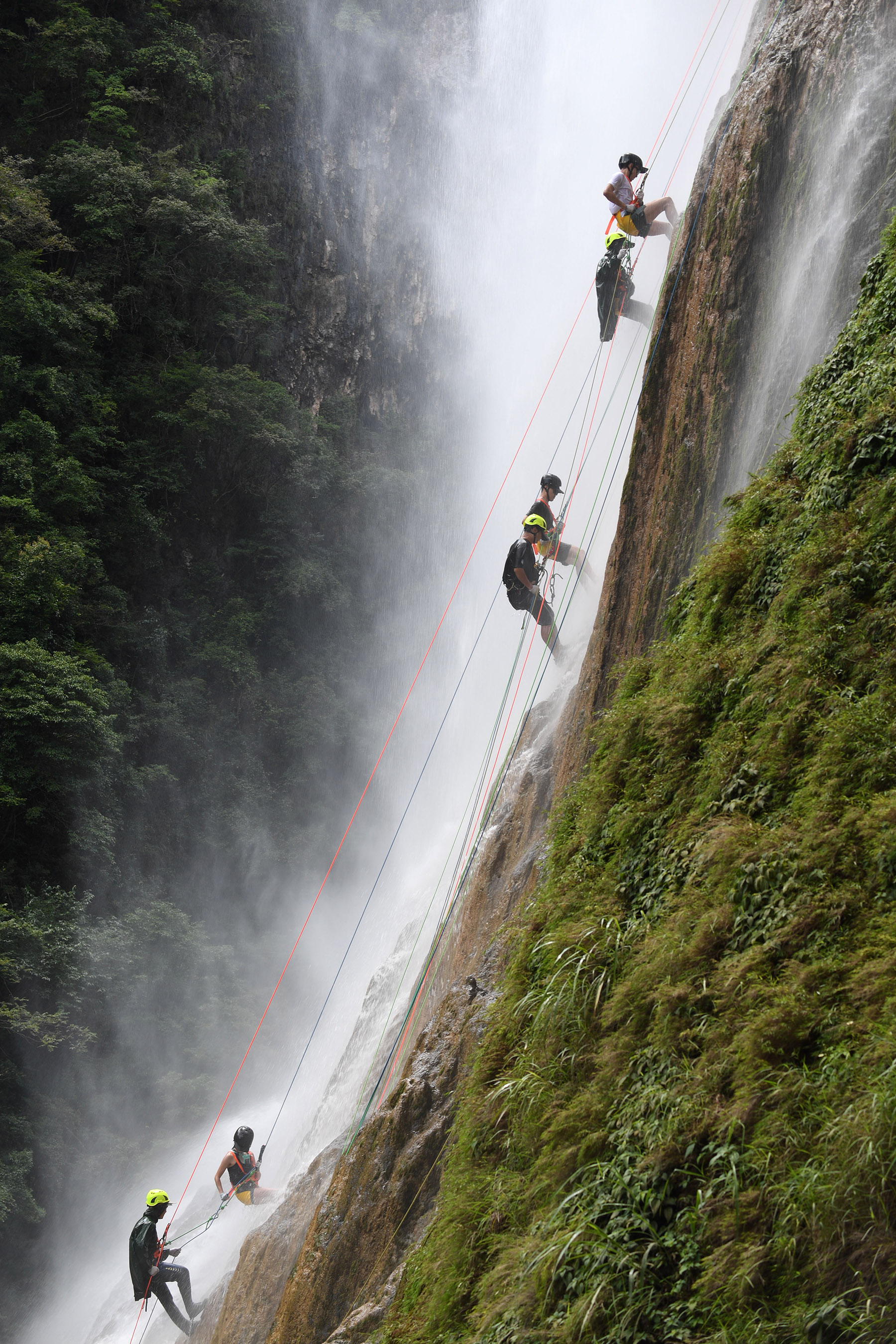Nation not only delivering fitness facilities for residents, but also upgrading and building pro venues across country

With favorable policies and an ever increasing number of sports enthusiasts, China's sports industry is thriving.
During a recent news conference, Gao Zhidan, head of the General Administration of Sport, said: "During the 14th Five-Year Plan period (2021-25), China's sports industry, based on high-quality development, has strengthened reform and innovation and has a clear goal of building a strong sporting country."
Ding Dong, head of the public sports bureau of the GAS, said that building and utilizing venues and facilities is a topic of interest for the public and a core element in improving the public service system for national fitness. "At present, the '15-minute fitness circle' in the community has been basically realized, and the needs of the masses to carry out fitness activities locally and conveniently have been basically met."
READ MORE: Sky's limit for outdoor activity market
The number of public fitness spaces is constantly expanding, as the country adds basic fitness and sporting facilities to local communities and parks to encourage active lifestyles. More than 170,000 sets of small and diverse fitness facilities such as table tennis tables have been built in nearly 20,000 residential areas and over 5,000 urban parks. At the same time, the country is continuously increasing the construction efforts of stadiums with spectator seating and facilities, sports parks, skating rinks, ski resorts and fitness centers. By the end of 2024, more than 1,300 new sports parks with an average area of over 40,000 square meters were built and put into use, said the GAS.
The comprehensive utilization efficiency of sports venues has been improved. During the 14th Five-Year Plan, the country has invested a total of 5.65 billion yuan ($791.13 million) to support the free or low-cost opening of sports venues to the public. Among them, by the end of 2025, 3,370 venues in nearly 1,500 county-level administrative regions will be subsidized, and the beneficial opening of sports venues to the public has become the new normal, data from the GAS show.
Brand competitions attract the participation of the whole nation. Every year, various national fitness themed activities are carried out in a planned and systematic manner throughout the year and are widely welcomed by people across the country. During this year's National Fitness Day, more than 22,000 sporting events were held nationwide, with over 11 million direct participants. For the first time, a national fitness competition was held in the form of a "regional competition", with over 6,000 events reaching the public. For three consecutive years, the National Fitness Online Games have been held, with a total of over 58 million participants, providing convenient online sports services to the public.
The country has been actively promoting the physical and mental health development of young people. During the 14th Five-Year Plan, more than 145,000 running activities have been held, with 151 million young people participating in, basically covering all age groups and distances. A preliminary intervention model for adolescent physical health has been established in 12 provincial-level regions to address common prominent issues such as myopia, obesity and scoliosis among adolescents.

Yang Xuedong, head of the sports economy bureau of the GAS, said that since the start of the 14th Five-Year Plan, China's sports industry has steadily developed. By 2023, the total scale of the national sports industry had reached 3.67 trillion yuan, with an average annual growth rate of 10.3 percent.
The sports services industry, led by the competition and performance industry and fitness and leisure industry, has grown rapidly, accounting for 72.7 percent of the added value of the sports industry in 2023, up from 68.7 percent in 2020.
The sports manufacturing industry is improving in quality and efficiency. By the end of 2024, there were 146 national-level specialized, refined and new "little giant" enterprises in the sports field, more than doubling the number from the end of 2022. Advanced materials and technologies are accelerating their transformation and application in the field of sports, and a large number of high-tech products such as carbon fiber bicycles and intelligent fitness equipment are entering millions of households.
Platform support is more effective. The country has successively launched 81 National Day and Spring Festival sports tourism routes, 19 outdoor sports routes and 26 national level skiing tourism resorts, promoting the development, utilization and coordinated development of advantageous resources in the region. The influence of sports equipment expos, sports culture expos and sports tourism expos continues to expand. In the first half, the total import and export volume of sports equipment exceeded $15.5 billion, the GAS said.
ALSO READ: Sportswear enjoys sprinting sales in China
The sports economy is thriving. The hosting of the Hangzhou Asian Games has driven a consumption growth of over 40 percent in surrounding areas. Ticket sales for popular professional events such as F1 are booming, with ticket revenue for last year's China Open exceeding 80 million yuan. Mass market sports events continue to innovate, with a number of popular events gaining popularity. The Jiangsu Football City League, or Suchao, attracted over 60,000 spectators for a single match, driving multi-scenario consumption of 38 billion yuan across Jiangsu province.
The scale and industrial influence of outdoor sports continue to expand. In 2024, the online consumption of outdoor sports in China was about 200 million person-time, with total consumption over 300 billion yuan. The construction of high-quality outdoor sports destinations is advancing at pace. By the end of 2024, there were 171,800 fitness trails with a length of 407,500 kilometers. The number of flight camps, car camps and other places in the country had reached 2,055, with 914 ski resorts nationwide, according to the GAS.
Wang Bing, a sports enthusiast in Beijing, said that she spends 1,000 yuan on sports equipment on average every month. "I ride my bicycle in spring and autumn, go kayaking in summer and skiing in winter. I love buying sports equipment."
She noted that her bicycle alone cost her 40,000 yuan and the sports outfits cost around 500 yuan on average.
Contact the writer at zhengyiran@chinadaily.com.cn


